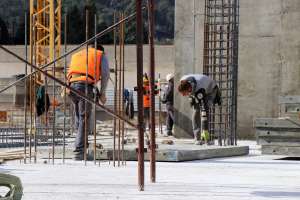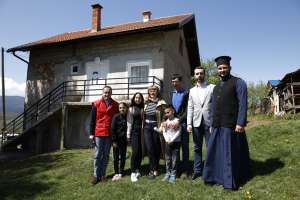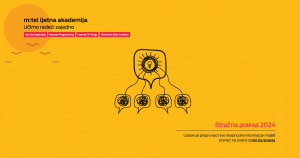SARAJEVO, November 22 (FENA) - The Swedish Environmental Protection Agency (SEPA) has published the first part of an extensive three-part survey of air pollutants, which will assess which pollutants are present in the air, where they come from and where they spread, and the research is carried out within the three-year IMPAQ project, which deals with various aspects of air pollution in Bosnia and Herzegovina.
The study was conducted in cooperation with the Swedish Meteorological and Hydrological Institute (SMHI), the Hydrometeorological Institutes of Republika Srpska and the Federation of Bosnia and Herzegovina, and the Institute of Public Health in Belgrade, SEPA said.
In the six cities where the measurements were made, the share of pollution originating from biomass ranges between 20 to 35 percent. It is interesting to note that these shares are higher in smaller cities, such as Tuzla and Bijeljina. This, of course, may be due to the greater presence of industry, traffic and coal combustion in larger cities, and these sources have a greater impact on the share of emissions in such locations. However, the previously made assumption that the household sector generally contributes to a high share of air pollution in the country is still emphasized.
In Brod and Zenica, however, the study failed to separate the share of biomass combustion and coal combustion. The combined share of these two sources in Brod and Zenica is 45 to 55 percent, which, despite the impossibility of calculating individual shares, is still a large part of the total pollution.
In Sarajevo and Banja Luka, the share of coal and brown coal combustion in air pollution is between 15 and 25 percent.
In this study, it was also determined that the so-called secondary aerosols contribute about 25 to 30 percent to total pollution. Secondary aerosol is a spray that is formed over a period of several hours or days by natural atmospheric oxidation of suspensions of fine particles formed by pollutant emissions. This parameter usually represents the share of pollution from wider-range sources outside cities, forming so-called regional background pollution. However, this percentage in the long-term share of pollution needs to be interpreted carefully.
The results of this, as well as the next two studies, will be an important basis for decision makers. Having reliable and comprehensive data on where emissions come from and where they are going will be crucial for politicians and responsible authorities to implement in the future the measures necessary to combat the problem of air pollution in Bosnia and Herzegovina.
(FENA) A. B.











